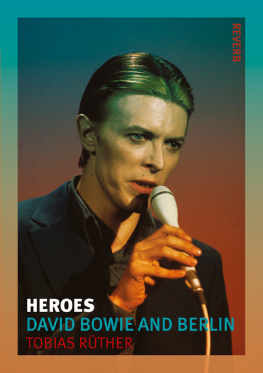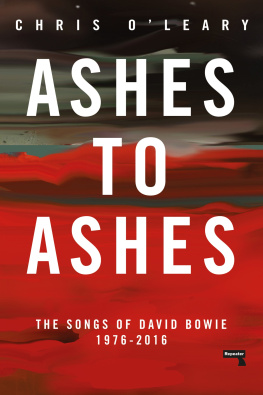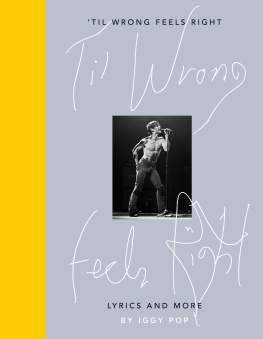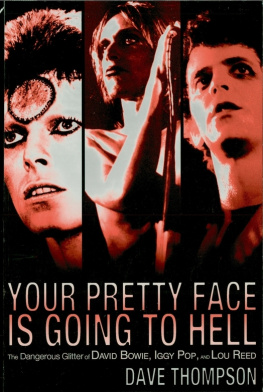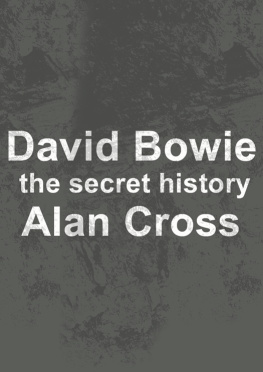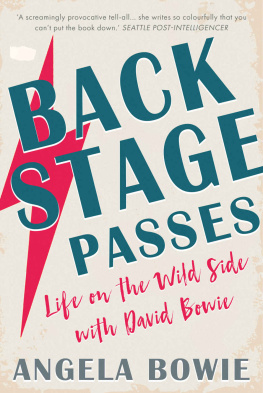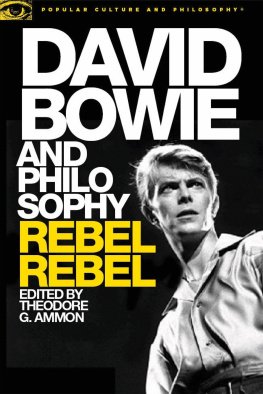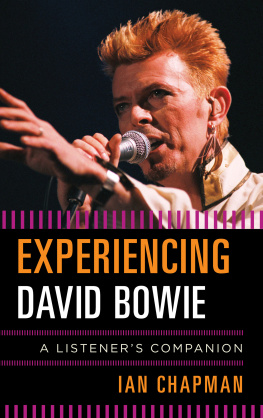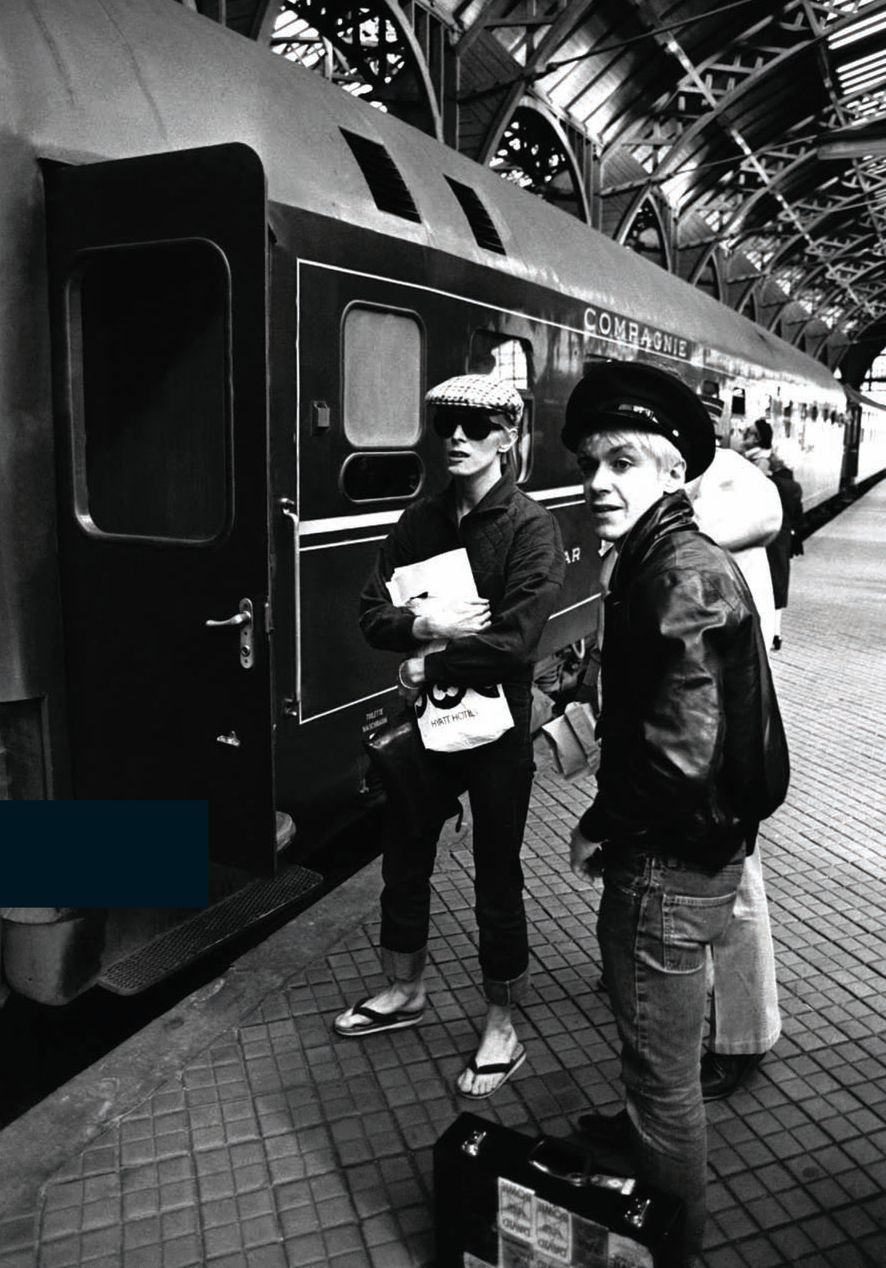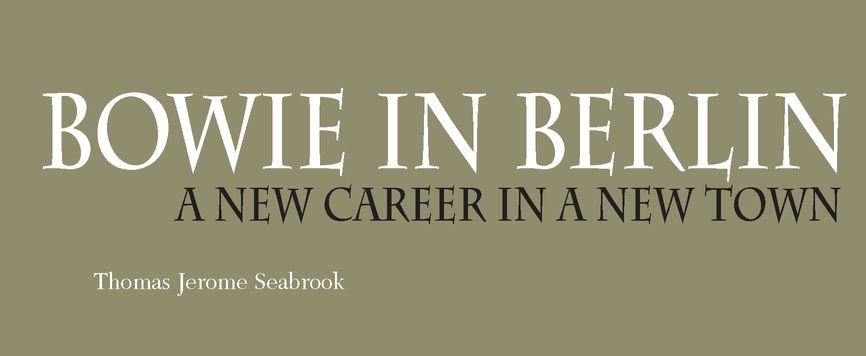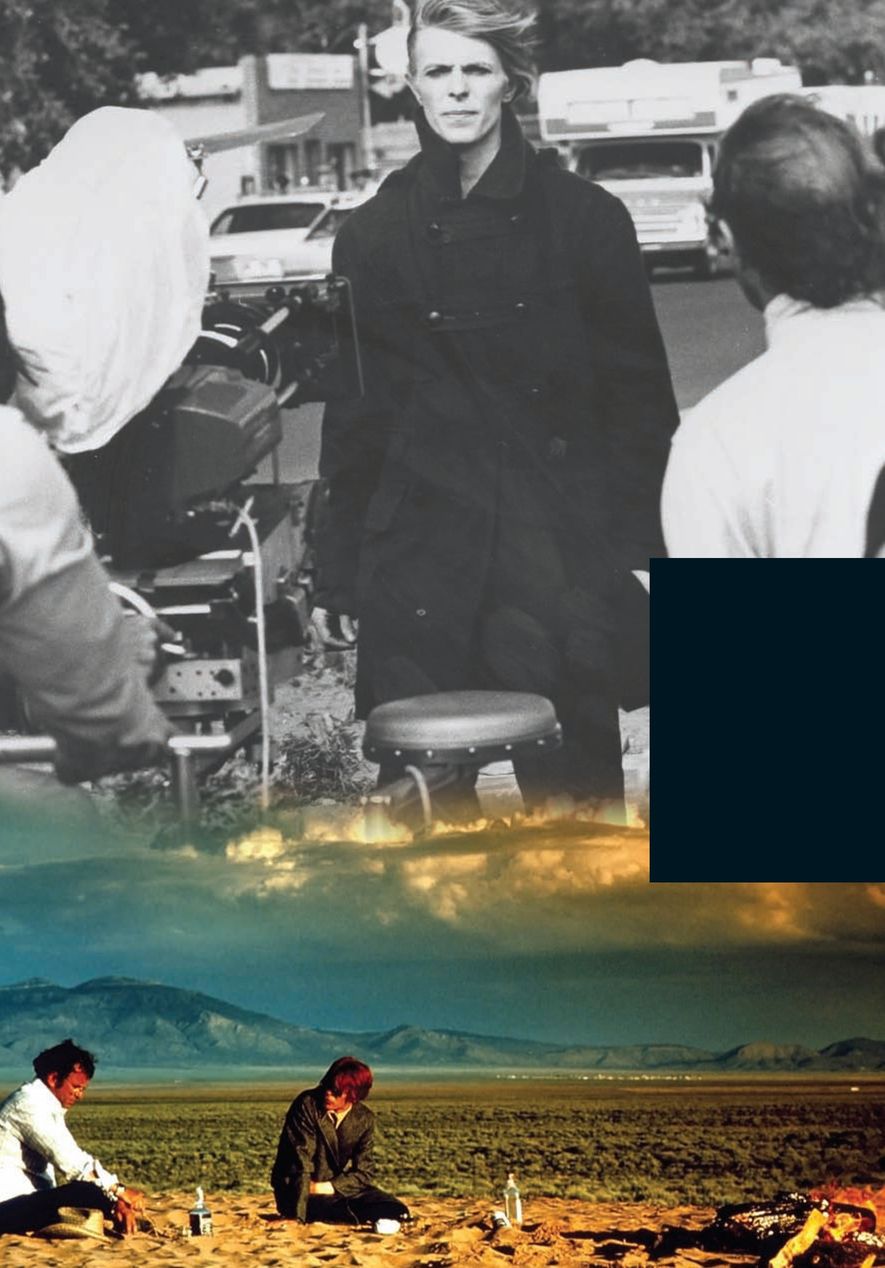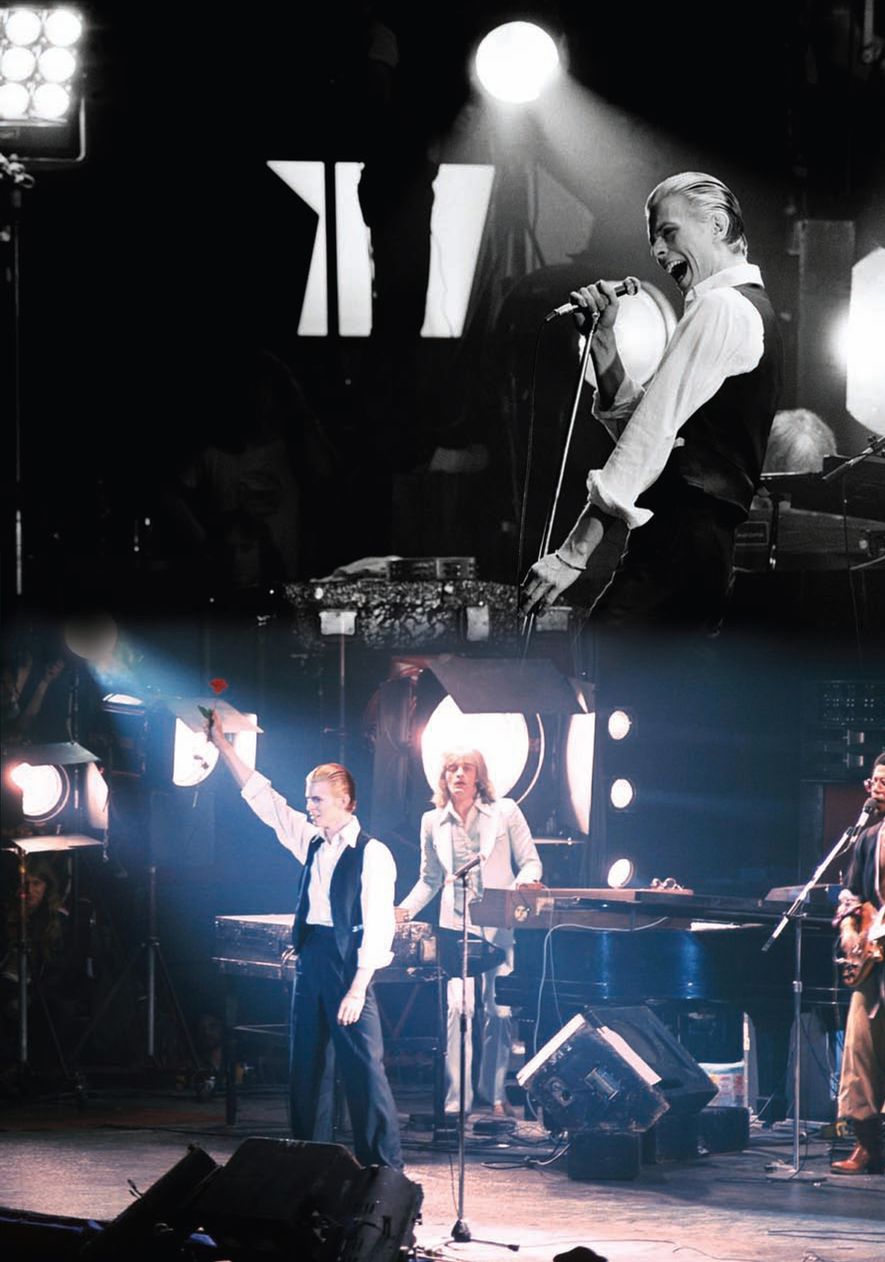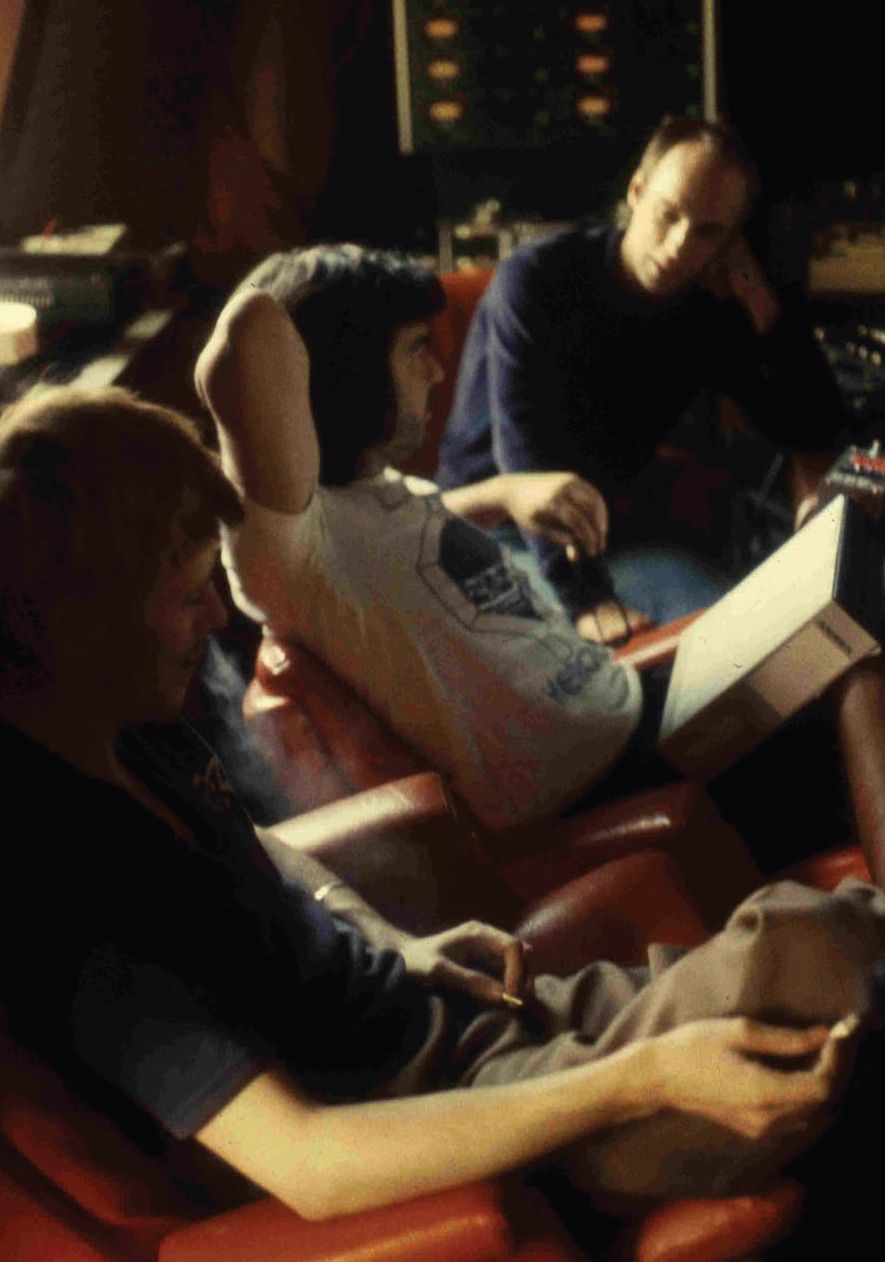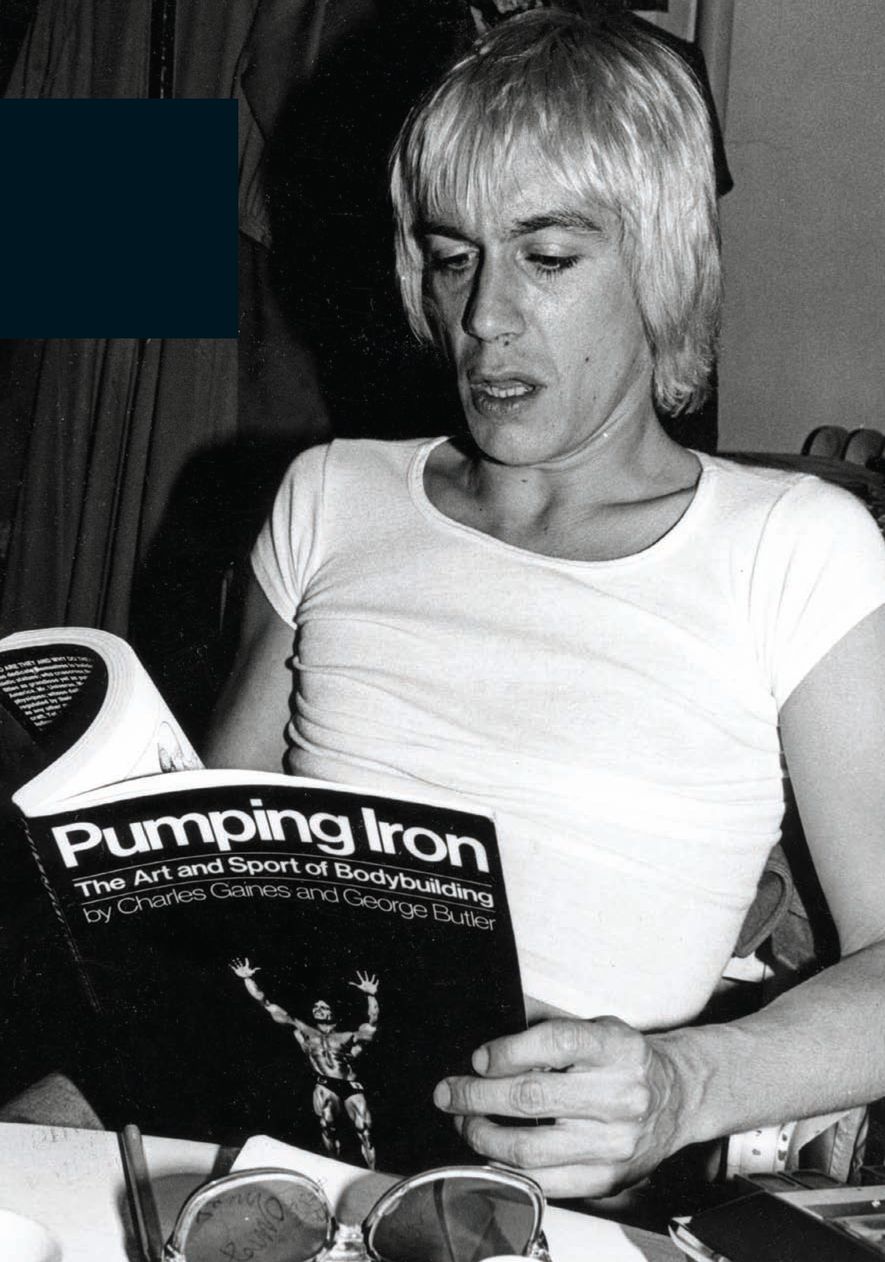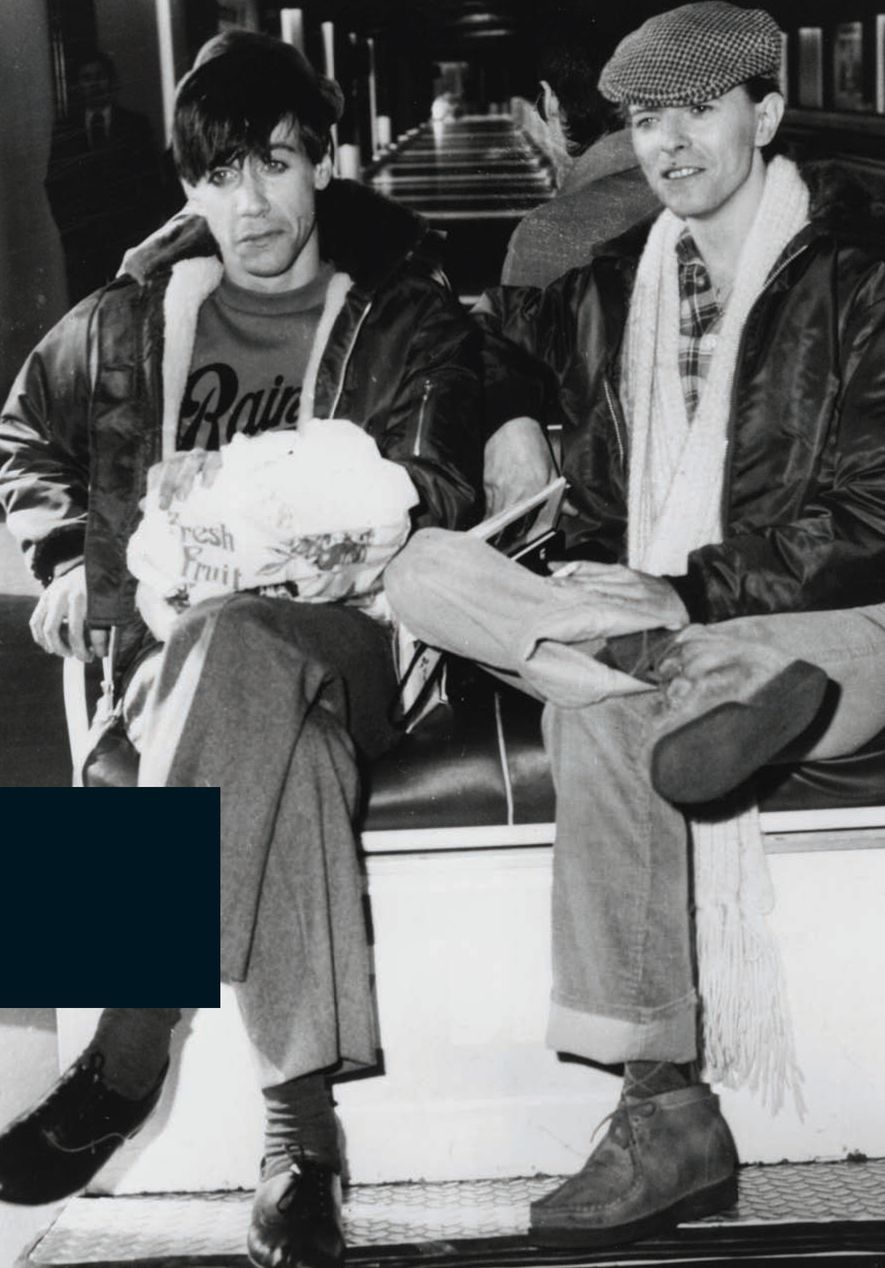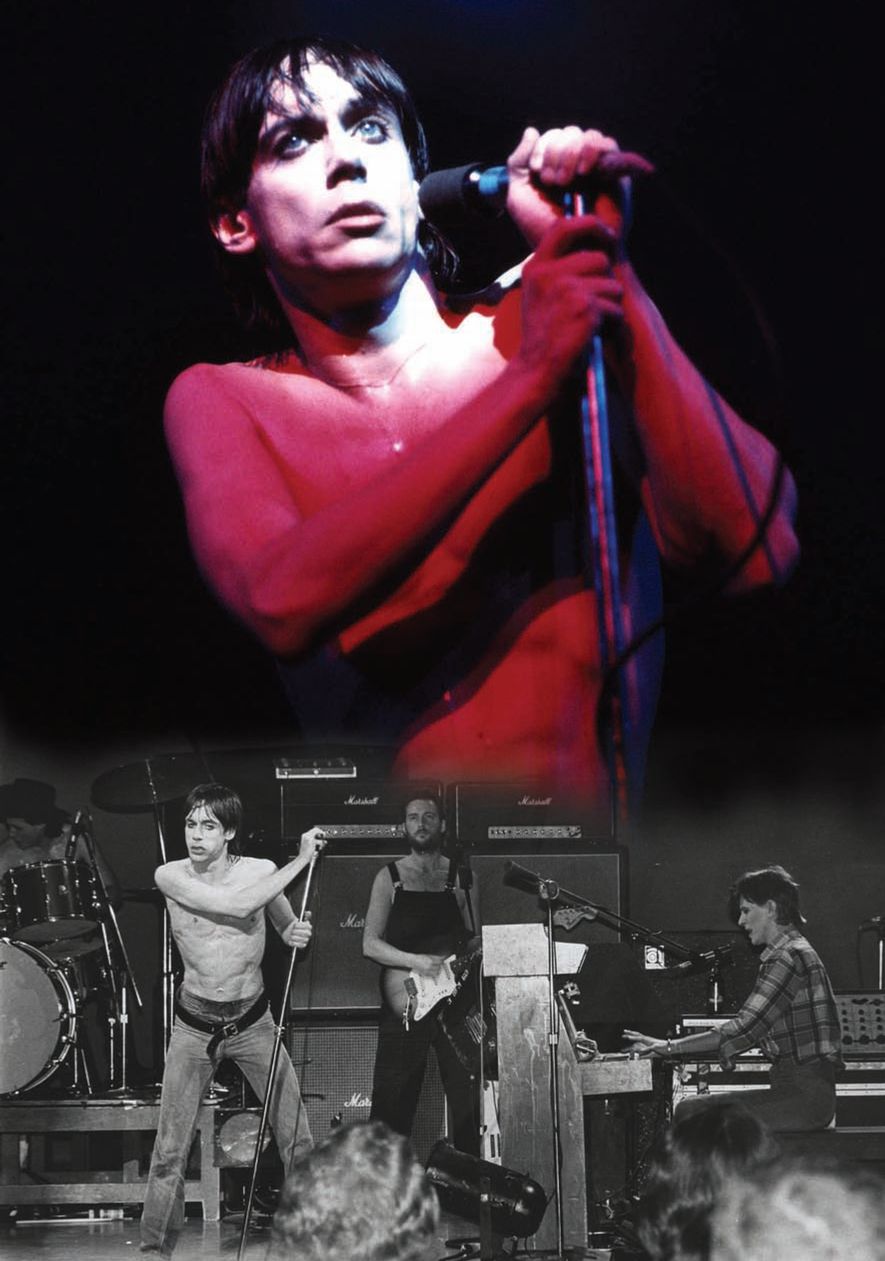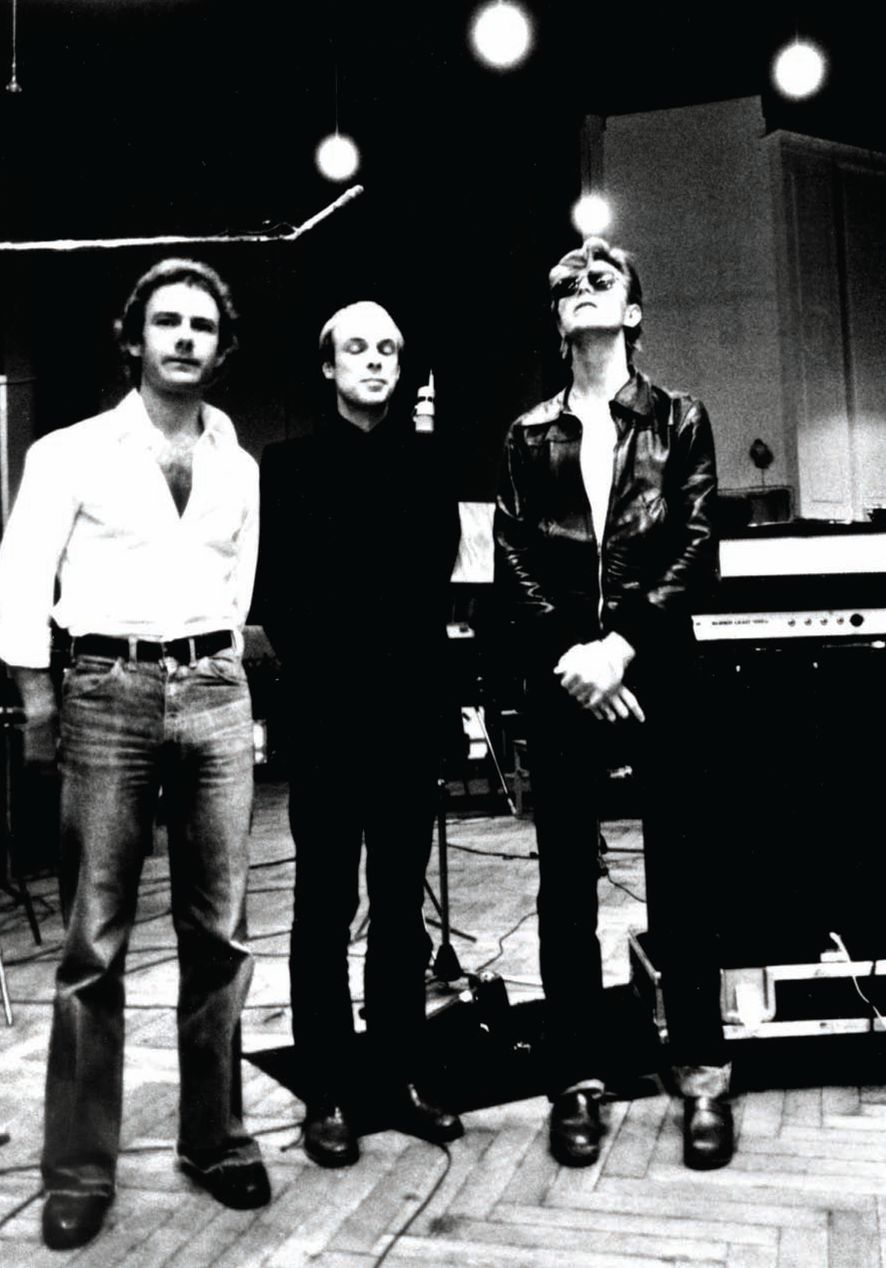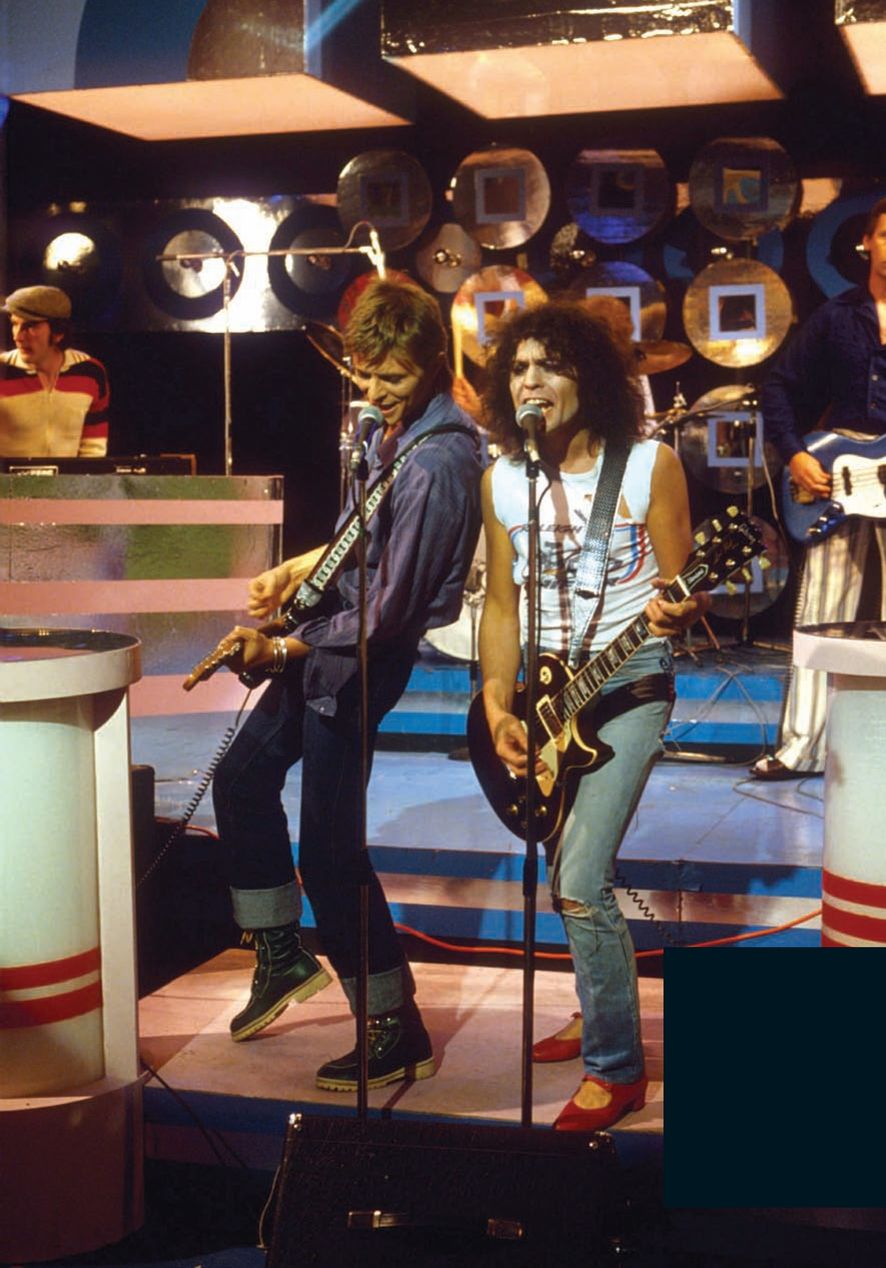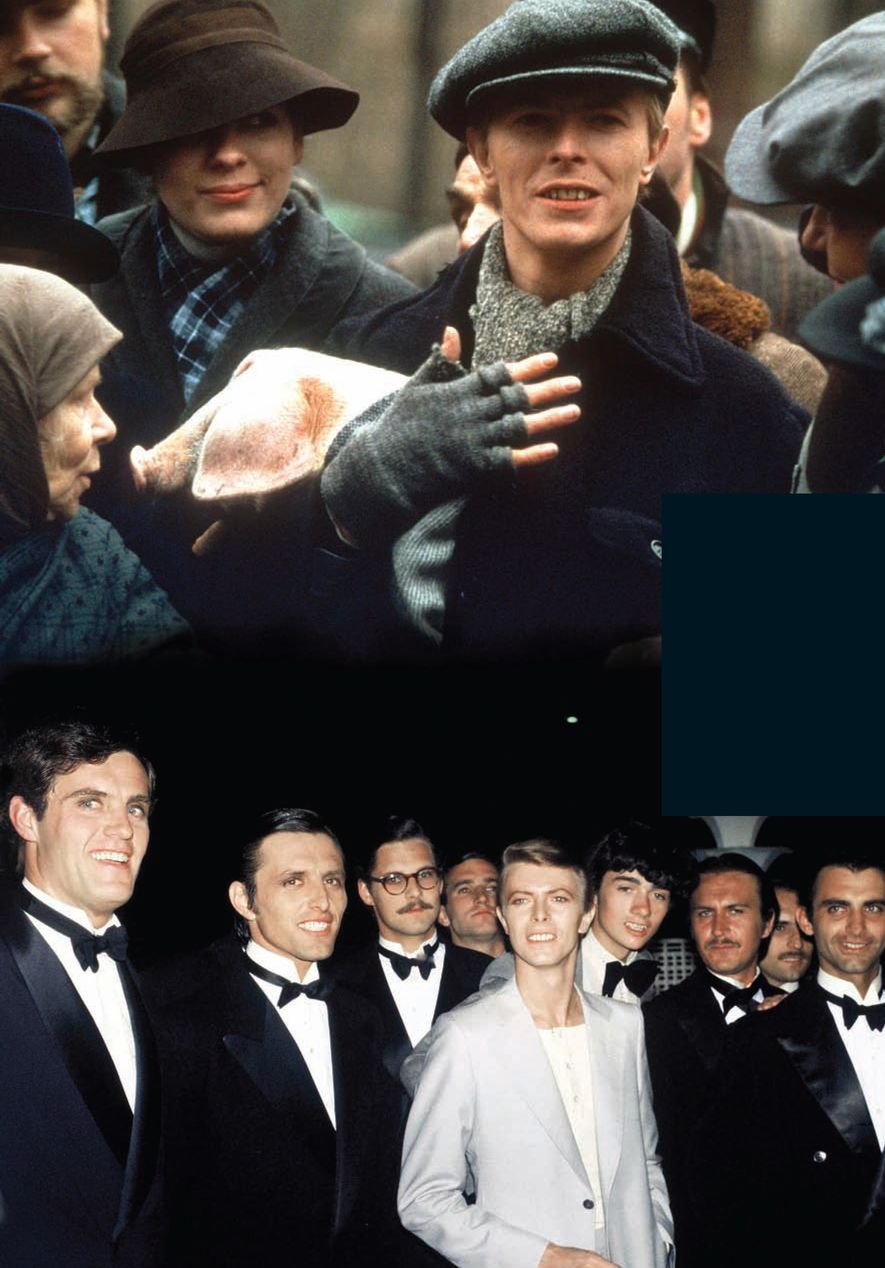Table of Contents
David Bowie andIggy Pop at CopenhagenCentral station,April 1976.
Clockwise from top left: Bowie on the set ofThe Man Who Fell To Earth, July 1975; onstage at the Falkoner Teatret, Copenhagen, Denmark, April 1976; at the Wembley Empire Pool, London, England, with Carlos Alomar (right) and Tony Kaye (centre), May 1976; with Rip Torn in a scene fromThe Man Who Fell To Earth.
Bowie, Tony Visconti, and Brian Eno during theLowsessions at the Chteau dHrouville, September 1976; Iggy Pop reveals his more thoughtful side during a break from the Station To Station tour in New York, March 1976.
Bowie and Iggy take a ride through Berlin-Tegel International Airport, April 1977; Iggy at the Rainbow Theatre, London, England, March 1977; at the same venue with Ricky Gardiner on guitar and Bowie on keyboards.
Robert Fripp (left), Brian Eno (centre), and Bowie at Hansa Tonstudio 3, Berlin, Germany, July 1977; Bowie performs an off-the-cuff duet with Marc Bolan at the Granada Television studios, Manchester, England, September 1977.
Bowie and Bing get ready to sing their famous festive duet, September 1977; a still fromJust A Gigolo, Bowies 32 Elvis Presley movies contained in one; at theGigolopremiere at the 31st International Cannes Film Festival, May 1978; backstage at Maxs Kansas City, New York, with Jerry Casale of Devo, December 1977.
Bowie at Madison Square Garden, New York, in April 1978, the final date of the American leg of his Low / Heroes tour.
INTRODUCTION
Consider this: its Monday, probably, and if theres a greasy pipe to be slithered down, David Bowie has slithered down it. He is, by his own admission, lucky to be alive, having come so close to exploding in a coke-fuelled supernova during his recent yearlong stay in Los Angeles. Since then he has relocated to Berlin, in the vain hope of cleaning up, and now finds himself behind the wheel of an open-topped Mercedes-Benz Ponton, cruising the citys ripped backside with Iggy Pop, once of The Stooges, in the passenger seat.
This unlikely double-act has been joined at the hip since the start of the year, united by a desire to curb their prodigious chemical appetites and an uncertainty about how on earth to go about it. Some days are better than others. Theres seven days in a week, Iggy would later recall: two for bingeing, two for recovery, and three more for any other activity. Sometimes that meant painting, reading, or visiting art galleries; sometimes drinking the night away in dimly lit sidestreet clubs, watching women dressed as men dressed as women sing ancient songs of love, loss, and war. On other occasions it meant pulling the top down and putting your foot to the floor, doing laps of the city in search of something better to do.
That, in fact, is what these dum dum boys are up to tonight: riding and riding, in Iggys words, or going round and round in Bowies. Pulling into the Kurfrstendamm, one of the main arteries of West Berlins zigzagging network of roads, they spot someone they know, parked by the side of the road - not a friend, mind you, but a drug dealer, whom Bowie is pretty sure has pulled a fast one on them. What can we do about this? he wonders. Stepping out of the car and resolving the situation in gentlemanly fashion isnt an option. Someone, as he might later sing, could get killed. No, theres only one thing for this, he thinks, as he rams the front grille of the Mercedes into the back of the dealers car - and then reverses, and does it again.
I rammed him for a good five to ten minutes, Bowie later recalled, between songs at a BBC concert in 2000. Nobody stopped. Nobody did anything. In the end, confident that hes made his point clearly enough, he drives away, but the incident is far from over. Having broken so dramatically out of the state of catatonic inertia that has dogged him for the past few months, the horror of what he has just done begins to dawn on him. Later the same evening, he finds himself in the basement car park of the hotel in which he and Iggy have been staying, driving round in circles, pushing close to 100 miles per hour and giving serious thought to the idea of bringing a definite close to this sorry charade by ramming the car into a wall. Until, that is, it runs out of gas. Crisis averted, this time.
A couple of weeks later, Bowie is in Hansa Tonstudio 2 with Tony Visconti, putting the finishing touches to the last song to be completed for Low, his newest and most groundbreaking album yet. The song, untitled when Bowie and his band laid down the musical tracks in September, is now called Always Crashing In The Same Car, and takes as its main lyrical inspiration those hair-raising moments underneath the Hotel Gehrus.
This incident is remarkable enough simply as an indication of the depths to which David Bowie, the greatest musical star of the 1970s, had fallen. But it is even more extraordinary to consider that, at a time of such incredible personal turmoil, he was able not just to continue working, but to create some of the most striking, moving, and groundbreaking work not just of his career but in the history of popular music. His return to Europe after a two-year, self-imposed exile in America precipitated a rush of intensive creativity equalled only by a handful of other musical acts: The Beatles and Bob Dylan in the 1960s, Stevie Wonder in the 1970s, and Prince in the 1980s.


